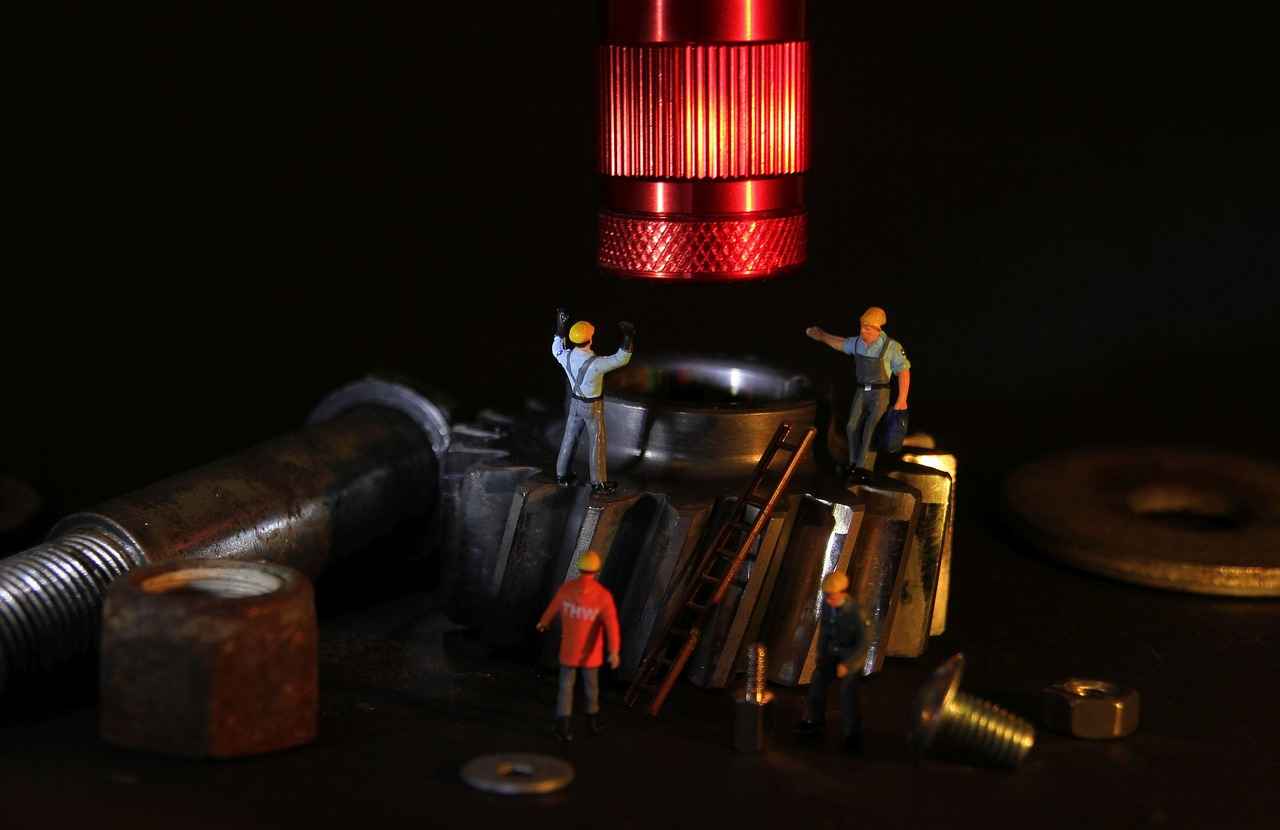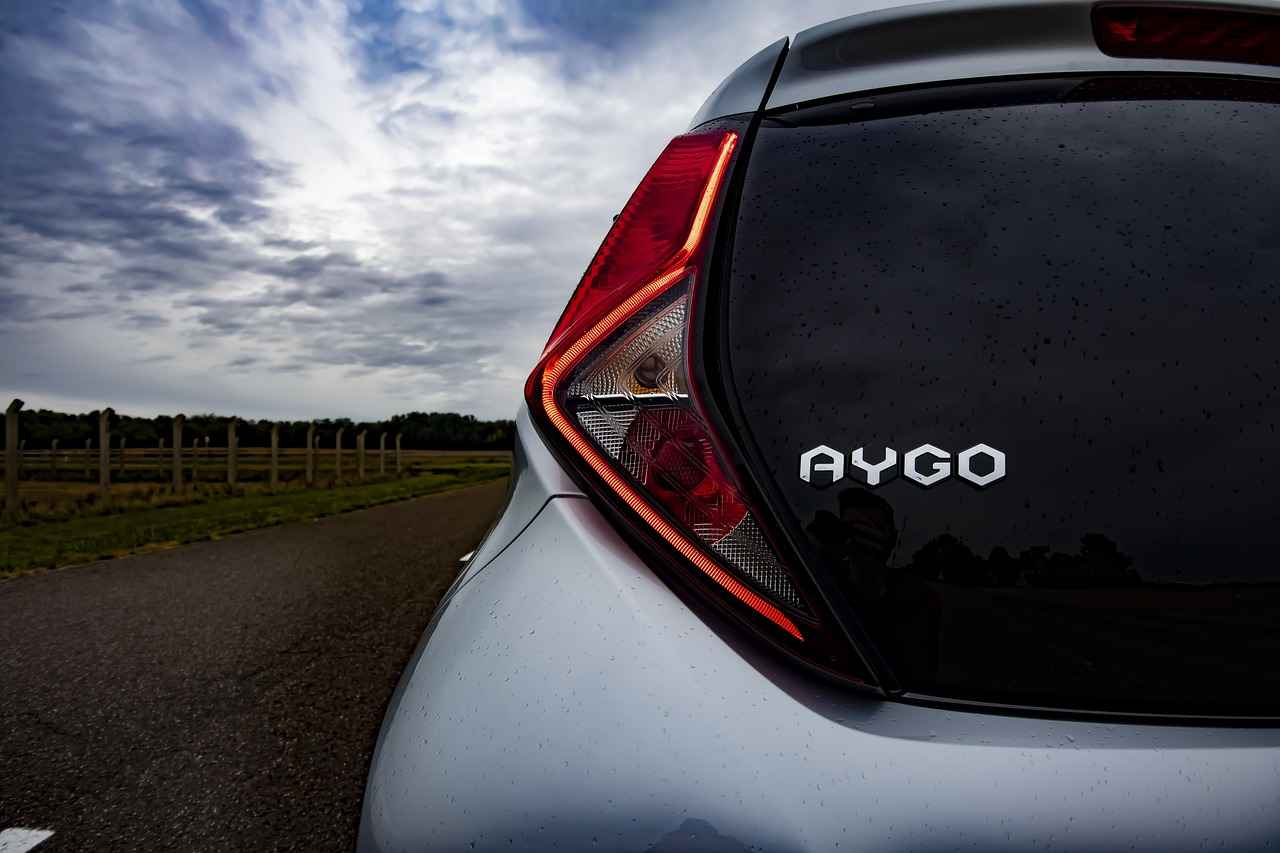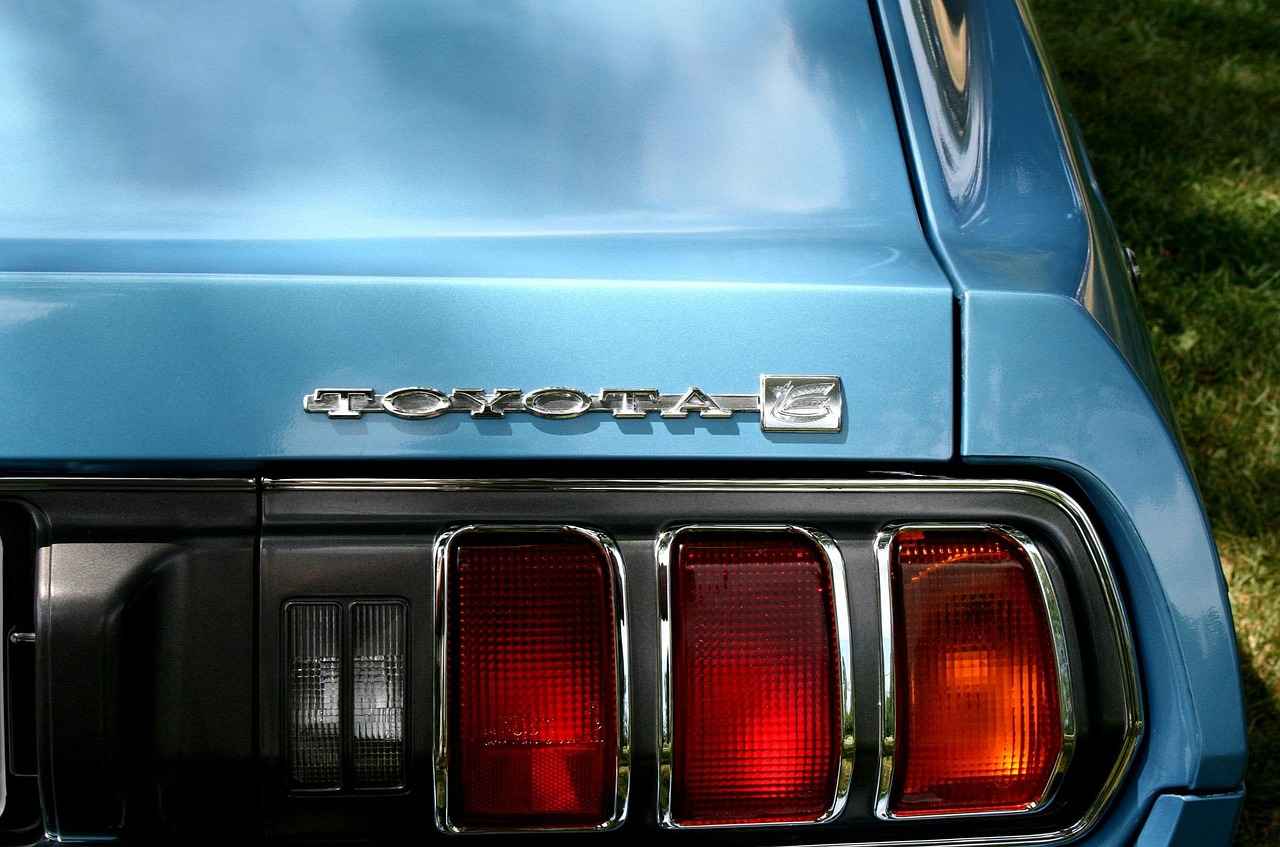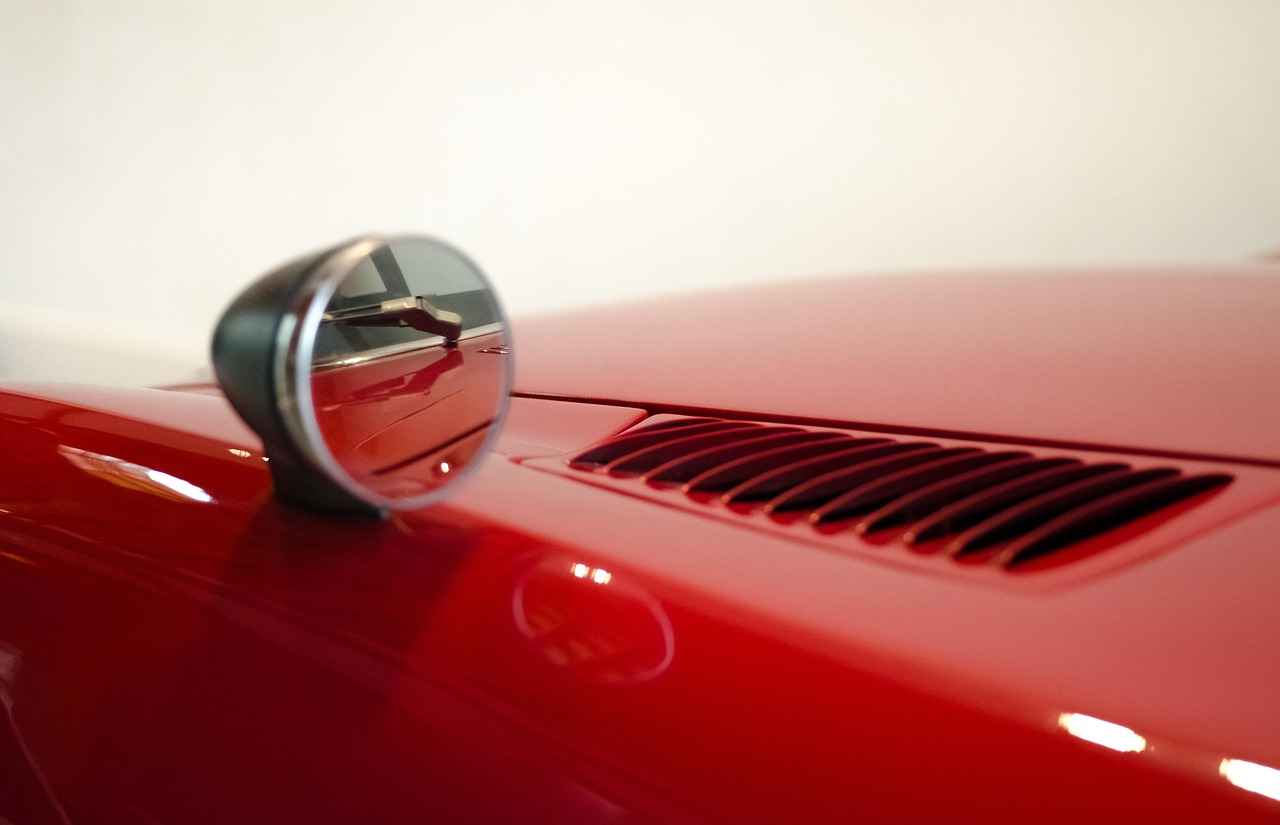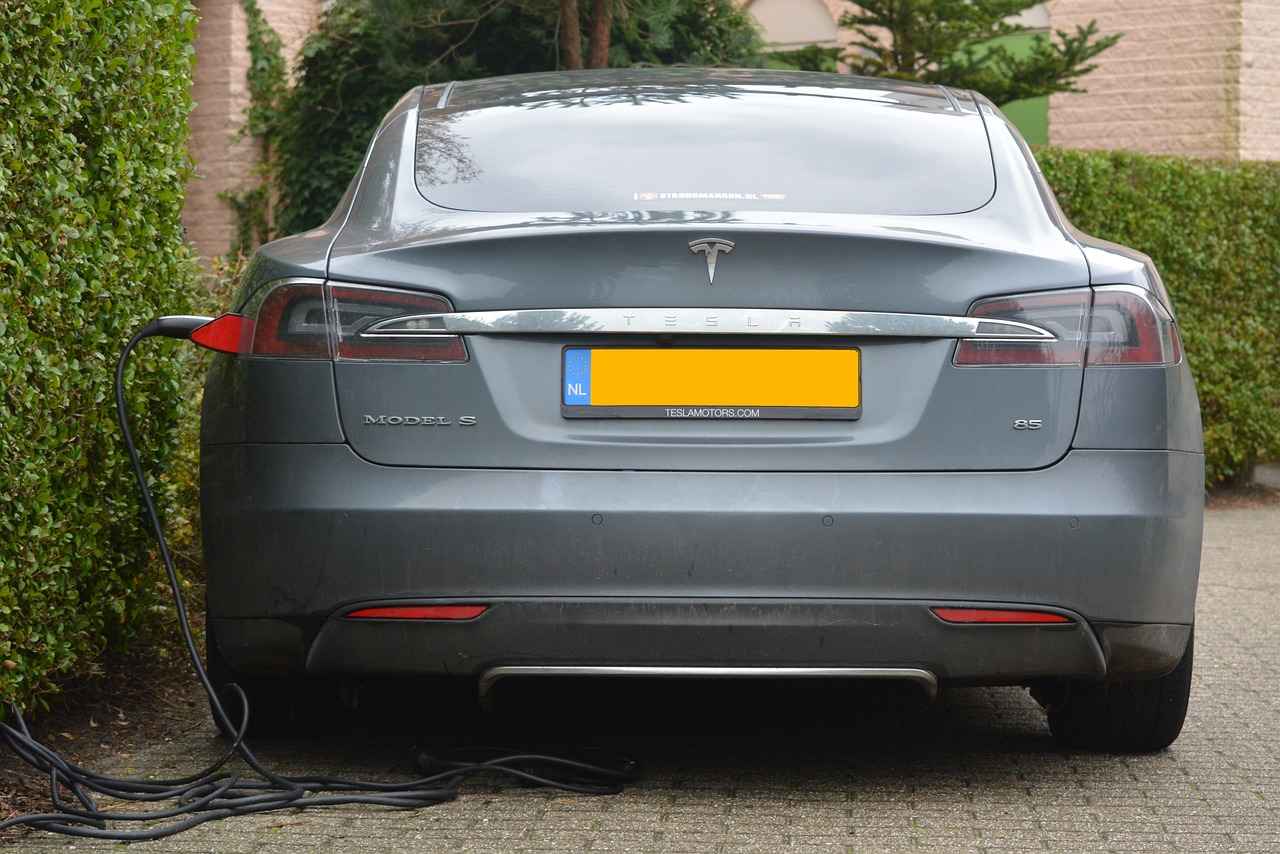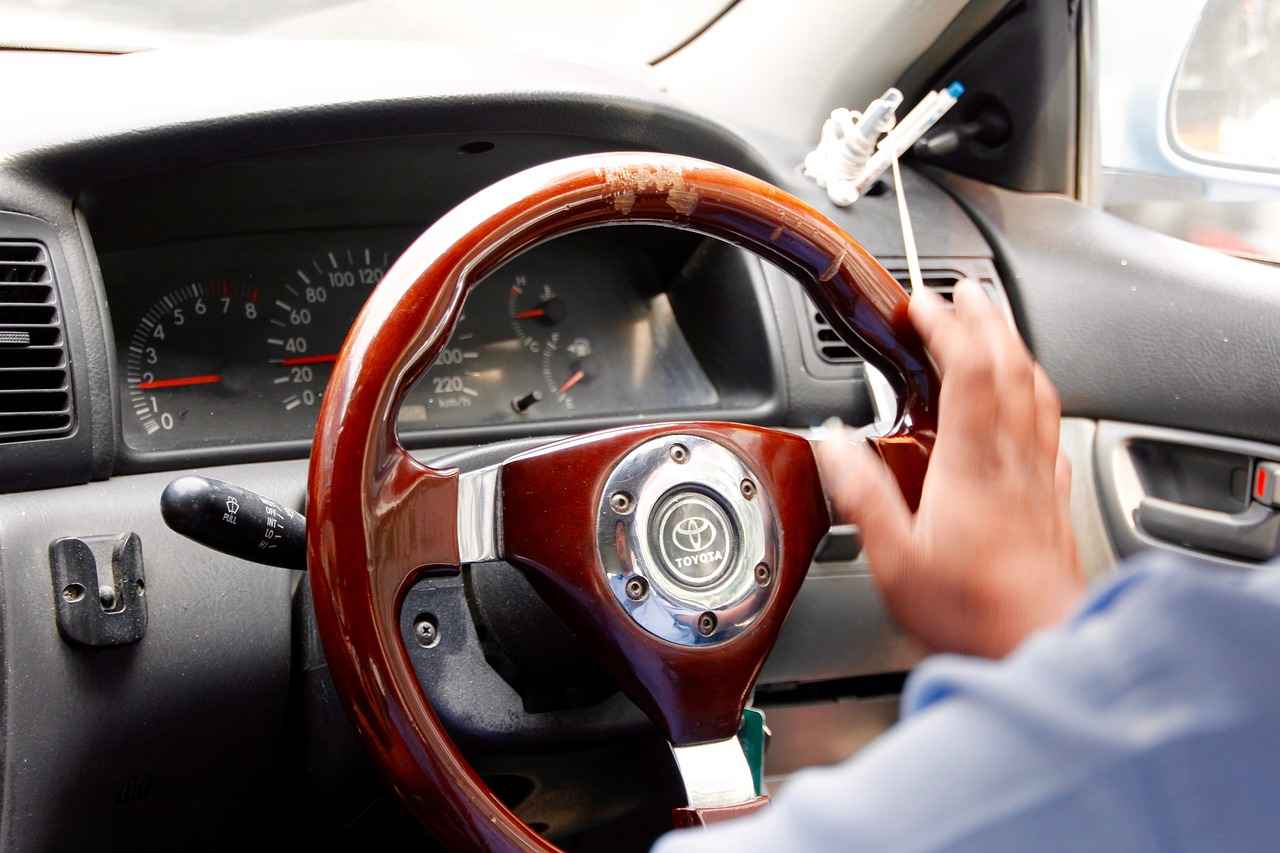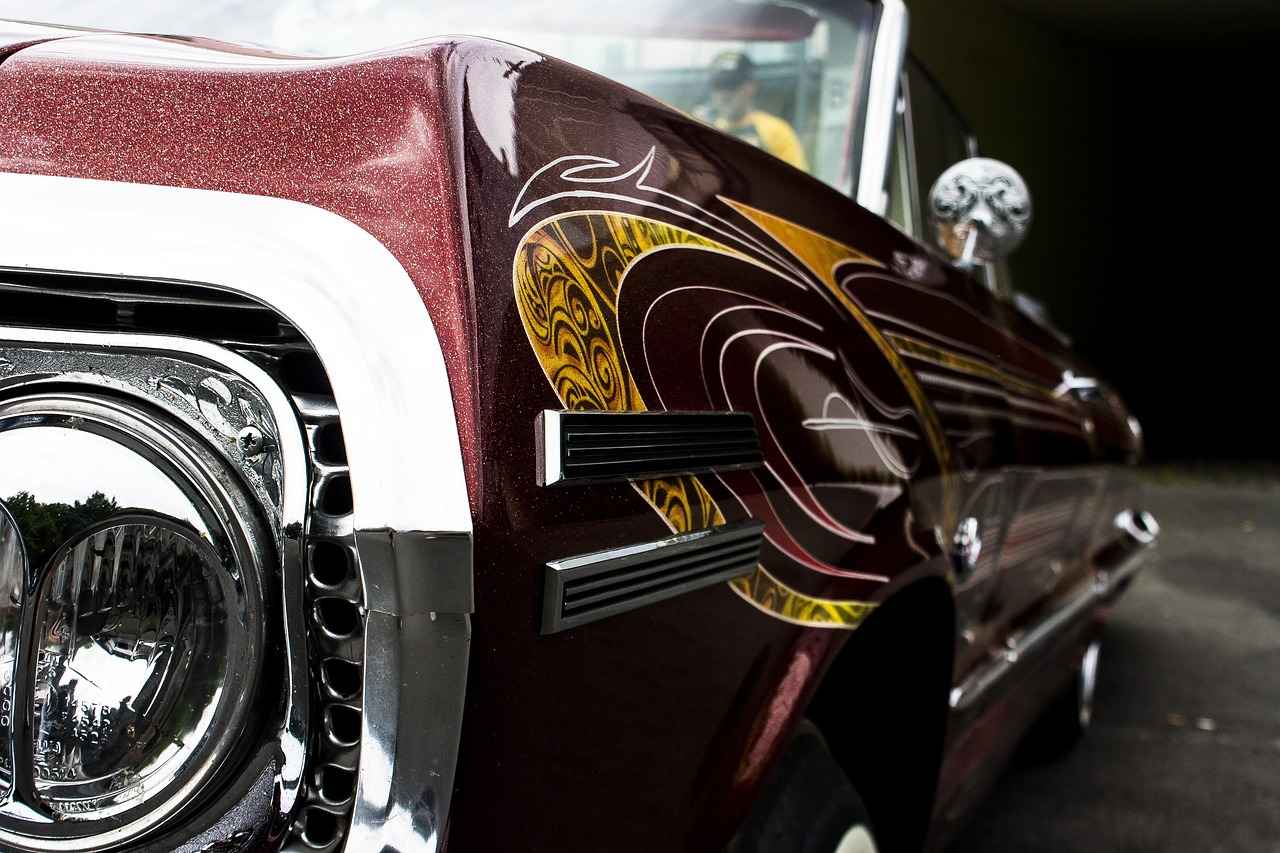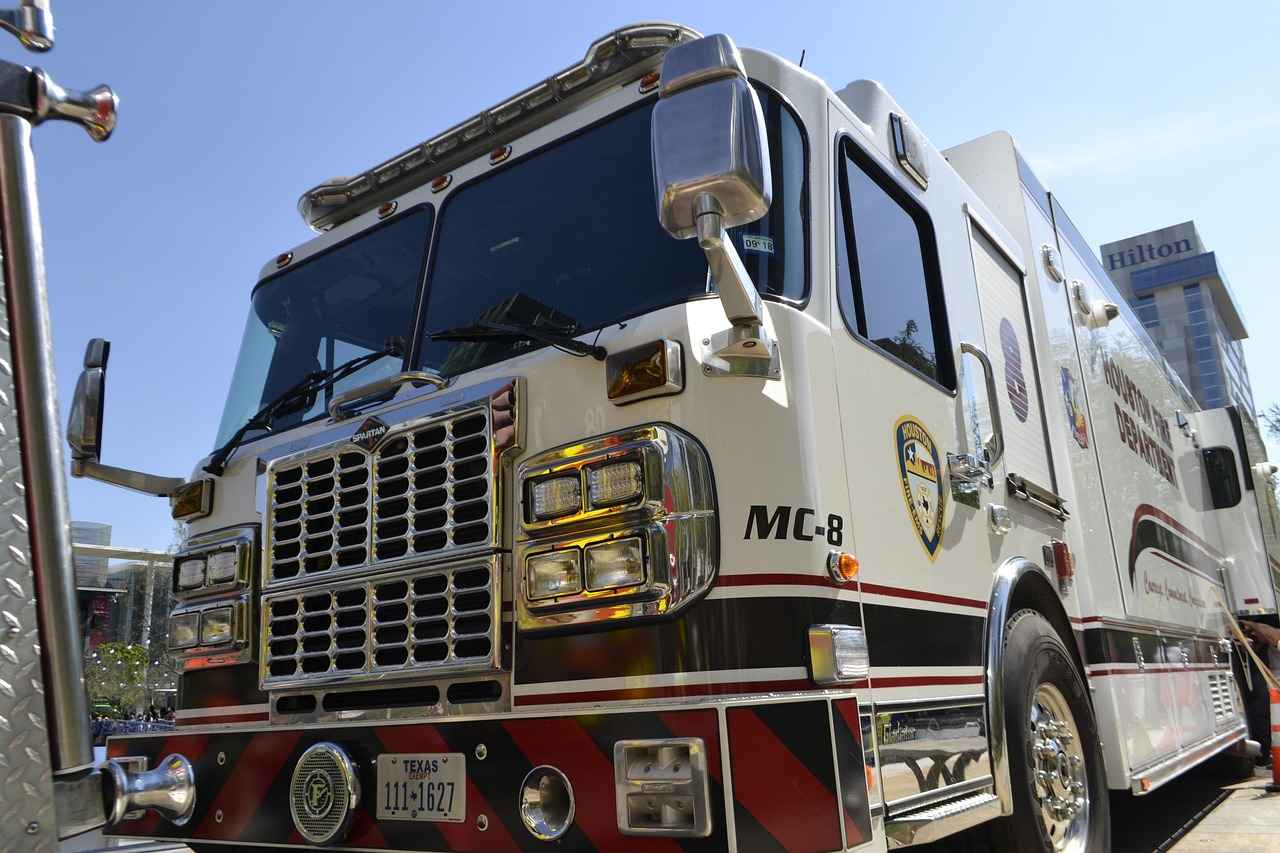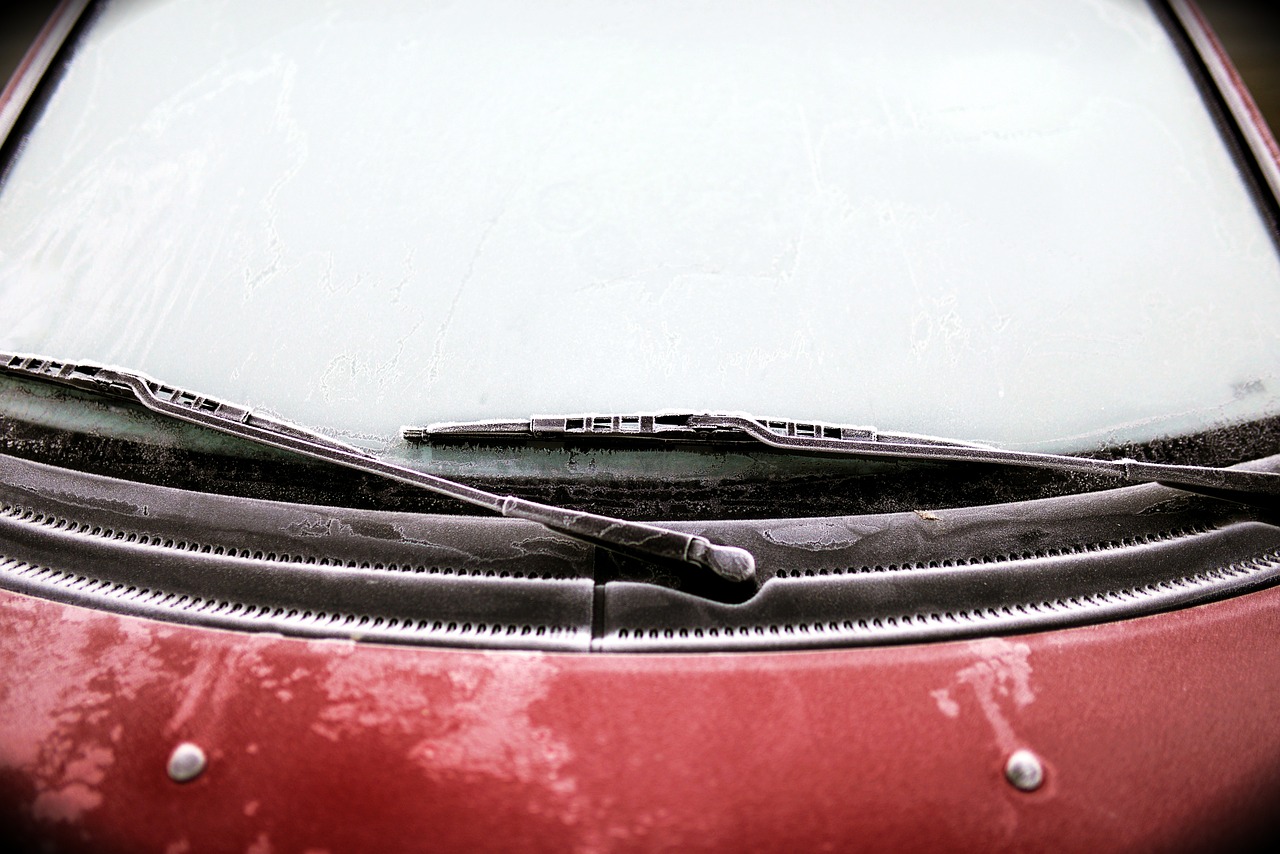This article delves into effective strategies to disable windshield wipers that refuse to stop, ensuring you can regain control over your vehicle’s functionality when faced with this common issue. Windshield wipers are essential for maintaining visibility during adverse weather conditions, but when they malfunction, it can be both distracting and dangerous.
What Causes Windshield Wipers to Malfunction?
Understanding the underlying reasons for windshield wiper malfunction is essential. Common causes include:
- Electrical Issues: Faulty wiring or short circuits can lead to continuous operation.
- Faulty Switches: A malfunctioning wiper control switch may get stuck in the ‘on’ position.
- Worn-Out Components: Over time, parts such as motors and linkages may wear out, causing erratic behavior.
How Can You Manually Disable Windshield Wipers?
If your windshield wipers won’t stop, you can manually disable them using a few straightforward methods to ensure safety and visibility while driving.
Using the Wiper Control Switch
The first step is to check the wiper control switch. Sometimes, it may be stuck in the ‘on’ position, and toggling it can resolve the issue quickly.
Identify the Wiper Control Location
Familiarize yourself with your vehicle’s wiper control location, typically found on the steering column or dashboard, to effectively access it when needed.
Toggle Between Settings
Switching between different wiper settings, such as intermittent and off, may reset the wiper system and stop the wipers from running continuously.
Disconnecting the Wiper Fuse
If toggling the switch doesn’t work, consider disconnecting the wiper fuse. This method provides a temporary solution until a more permanent fix is applied.
Locate the Fuse Box
Finding the fuse box is crucial. Usually, it is located under the dashboard or in the engine compartment, and the owner’s manual can guide you to the exact location.
Remove the Wiper Fuse
Once located, carefully remove the wiper fuse using a fuse puller or pliers, ensuring not to damage surrounding components. This action will disable the wipers immediately.
When Should You Seek Professional Help?
If your windshield wipers continue to malfunction after attempting these methods, it may be time to consult a professional mechanic for a thorough inspection and repair.
Signs That Indicate a Serious Issue
Pay attention to warning signs such as:
- Unusual Noises: Grinding or clicking sounds may indicate a mechanical issue.
- Erratic Movement: Wipers that move unpredictably could signal a problem with the motor.
- Electrical Problems: Flickering lights or other electrical anomalies may suggest a deeper issue.
Choosing the Right Mechanic
Selecting a qualified mechanic is vital. Look for certified professionals with experience in windshield wiper systems to ensure a reliable diagnosis and repair. Always check reviews and ask for recommendations to find the best service.
By understanding how to turn off malfunctioning windshield wipers and recognizing the signs of more serious issues, you can maintain your vehicle’s functionality and safety on the road.

What Causes Windshield Wipers to Malfunction?
Understanding the underlying reasons for windshield wiper malfunction is essential for every vehicle owner. Windshield wipers are crucial for maintaining visibility during adverse weather conditions, and when they fail to operate correctly, it can lead to dangerous driving situations. Several factors contribute to wiper malfunctions, and recognizing these can help in troubleshooting and resolving the issue promptly.
- Electrical Issues: One of the primary reasons for wiper malfunction is related to the vehicle’s electrical system. Faulty wiring, blown fuses, or issues with the wiper motor can prevent the wipers from functioning as intended. Electrical shorts or corrosion in the wiring can disrupt the power supply, leading to erratic wiper behavior.
- Faulty Switches: The wiper control switch is often a culprit when wipers refuse to stop. If the switch is damaged or stuck, it may send continuous signals to the wiper motor, causing it to operate without interruption. Regular use can lead to wear and tear on the switch, making it prone to failure.
- Worn-out Components: Over time, components such as wiper blades, arms, and motors can wear out. Worn-out wiper blades may not make proper contact with the windshield, leading to ineffective wiping. Similarly, a failing wiper motor can result in inconsistent operation, which may cause the wipers to run continuously or not at all.
- Weather Conditions: Extreme weather can also impact wiper performance. Ice, snow, or heavy rain can put additional strain on the wiper system. If wipers are frozen to the windshield, attempting to operate them can damage the motor or other components.
- Mechanical Failures: Mechanical failures within the wiper linkage can lead to wipers becoming stuck or operating erratically. If the linkage is broken or disconnected, the wipers may not function properly, regardless of the electrical system’s state.
By understanding these common causes, vehicle owners can take proactive measures to prevent wiper malfunctions. Regular maintenance, such as checking the wiper fluid, inspecting the wiper blades, and ensuring the electrical connections are secure, can go a long way in ensuring the wipers function effectively.
If your windshield wipers are malfunctioning, diagnosing the problem can save time and money. Here are some steps to follow:
- Check the Wiper Blades: Inspect the wiper blades for any signs of wear or damage. If they appear cracked or brittle, replacing them may resolve the issue.
- Test the Wiper Switch: Toggle the wiper switch through all settings to see if any respond. If the wipers only work on certain settings or not at all, the switch may need replacement.
- Inspect the Fuse: Locate the fuse box and check if the wiper fuse is blown. Replacing a blown fuse can often restore functionality.
- Listen for Motor Sounds: Turn on the wipers and listen for the sound of the motor. If you hear nothing, it may indicate a motor failure that requires professional attention.
Understanding the reasons behind windshield wiper malfunctions can empower vehicle owners to take appropriate actions, ensuring safety and visibility while driving.

How Can You Manually Disable Windshield Wipers?
If you find yourself in a situation where your windshield wipers won’t stop, it can be both frustrating and distracting while driving. However, there are several straightforward methods to manually disable them, helping you regain control and maintain safety on the road. Below, we explore effective techniques to turn off malfunctioning wipers.
Understanding the reasons behind windshield wiper malfunctions is crucial. Common causes include:
- Electrical Issues: Faulty wiring or blown fuses can lead to continuous operation.
- Faulty Switches: A malfunctioning switch may get stuck in the “on” position.
- Worn-out Components: Over time, parts can wear down, causing erratic behavior.
When your windshield wipers won’t stop, there are a few methods you can try to disable them manually:
The first and simplest method is to check the wiper control switch. Sometimes, it may be stuck:
- Identify the Wiper Control Location: Familiarize yourself with the location of the wiper control, usually found on the steering column or dashboard.
- Toggle Between Settings: Switch between different settings, such as intermittent and off, to see if this resets the system.
If toggling the switch doesn’t solve the issue, consider disconnecting the wiper fuse:
- Locate the Fuse Box: The fuse box is typically under the dashboard or in the engine compartment. Refer to your owner’s manual for the exact location.
- Remove the Wiper Fuse: Carefully remove the wiper fuse using a fuse puller or pliers to avoid damaging surrounding components. This will disable the wipers immediately.
If your windshield wipers continue to malfunction after trying the above methods, it may be time to consult a professional mechanic:
- Signs That Indicate a Serious Issue: Look for unusual noises, erratic movement, or electrical problems, which may suggest deeper issues within the wiper system.
- Choosing the Right Mechanic: Select a qualified mechanic with experience in windshield wiper systems to ensure a reliable diagnosis and repair.
In summary, dealing with windshield wipers that won’t stop can be a hassle, but knowing how to manually disable them can help maintain your safety on the road. By understanding the underlying causes and applying the methods discussed, you can effectively manage this common vehicle issue.
Using the Wiper Control Switch
When dealing with windshield wipers that refuse to stop, one of the first things you should investigate is the wiper control switch. This component is crucial for controlling the operation of your wipers, and sometimes it can become stuck or malfunction, leading to continuous wiper activity.
The wiper control switch is typically located on the steering column or dashboard, making it easily accessible. If you find that your wipers are stuck in the “on” position, the first step is to toggle the switch. This simple action can often reset the system and stop the wipers. If the switch feels unresponsive or stuck, it might need to be wiggled gently to free it up.
Familiarizing yourself with the location of the wiper control is essential. Most vehicles have the control integrated into the stalk behind the steering wheel or as part of the dashboard controls. Refer to your vehicle’s manual if you have trouble locating it.
Once you’ve located the wiper control, try switching between different settings. For example, moving the wiper from the intermittent setting to the off position can sometimes reset the system. If the wipers stop, you’ve resolved the issue. If not, there are additional steps to consider.
If toggling the switch does not work, you may need to take more drastic measures by disconnecting the wiper fuse. This method effectively disables the wipers until you can address the underlying issue.
The fuse box is typically located under the dashboard on the driver’s side or in the engine compartment. Consult your vehicle’s manual for precise guidance on finding the fuse box.
- Once you’ve located the fuse box, look for the diagram that indicates which fuse controls the windshield wipers.
- Using a fuse puller or a pair of pliers, carefully remove the wiper fuse. Take care not to damage any surrounding fuses or components.
- After removing the fuse, check to ensure that the wipers have stopped functioning.
If your windshield wipers continue to malfunction after attempting the methods above, it may be time to consult a professional mechanic. Persistent issues could indicate deeper electrical problems or a faulty wiper motor.
Be observant for warning signs that suggest a more serious problem. These may include:
- Unusual noises when the wipers are in operation.
- Erratic movement of the wipers, such as stopping midway or moving at inconsistent speeds.
- Electrical problems such as blown fuses or dashboard warning lights.
Selecting a qualified mechanic is crucial for resolving windshield wiper problems effectively. Look for certified professionals who have experience with your vehicle’s make and model. A reliable mechanic will conduct a thorough diagnosis and provide the necessary repairs, ensuring your wiper system functions correctly.
By following these steps, you can effectively manage windshield wipers that won’t stop, ensuring your safety and visibility on the road.
on
How Do You Turn Off Windshield Wipers When They Won’t Stop?
This article explores effective methods to disable windshield wipers that refuse to stop, ensuring you can regain control over your vehicle’s functionality when faced with this common issue.
What Causes Windshield Wipers to Malfunction?
Understanding the underlying reasons for windshield wiper malfunction is essential. Common causes include electrical issues, faulty switches, or worn-out components that can lead to wipers operating continuously.
How Can You Manually Disable Windshield Wipers?
If your windshield wipers won’t stop, you can manually disable them using a few straightforward methods, ensuring safety and visibility while driving.
- Using the Wiper Control Switch
- Identify the Wiper Control Location
- Toggle Between Settings
- Disconnecting the Wiper Fuse
- Locate the Fuse Box
- Remove the Wiper Fuse
The first step is to check the wiper control switch. Sometimes, it may be stuck in the position, and toggling it can resolve the issue quickly.
Familiarize yourself with your vehicle’s wiper control location, typically found on the steering column or dashboard, to effectively access it when needed.
Switching between different wiper settings, such as intermittent and off, may reset the wiper system and stop the wipers from running continuously.
If toggling the switch doesn’t work, consider disconnecting the wiper fuse. This method provides a temporary solution until a more permanent fix is applied.
Finding the fuse box is crucial. Usually, it is located under the dashboard or in the engine compartment, and the owner’s manual can guide you to the exact location.
Once located, carefully remove the wiper fuse using a fuse puller or pliers, ensuring not to damage surrounding components. This action will disable the wipers immediately.
When Should You Seek Professional Help?
If your windshield wipers continue to malfunction after attempting these methods, it may be time to consult a professional mechanic for a thorough inspection and repair.
- Signs That Indicate a Serious Issue
- Choosing the Right Mechanic
Pay attention to warning signs such as unusual noises, erratic movement, or electrical problems, which may indicate deeper issues within the wiper system.
Selecting a qualified mechanic is vital. Look for certified professionals with experience in windshield wiper systems to ensure a reliable diagnosis and repair.
By following these steps, you can effectively manage the situation when your windshield wipers won’t stop. Ensuring your vehicle is safe and functional is paramount, and knowing how to address common issues can save you time and hassle.
position, and toggling it can resolve the issue quickly.
How Do You Turn Off Windshield Wipers When They Won’t Stop?
This article explores effective methods to disable windshield wipers that refuse to stop, ensuring you can regain control over your vehicle’s functionality when faced with this common issue.
What Causes Windshield Wipers to Malfunction?
Understanding the underlying reasons for windshield wiper malfunction is essential. Common causes include electrical issues, faulty switches, or worn-out components that can lead to wipers operating continuously.
How Can You Manually Disable Windshield Wipers?
If your windshield wipers won’t stop, you can manually disable them using a few straightforward methods, ensuring safety and visibility while driving.
Using the Wiper Control Switch
- Identify the Wiper Control Location: Familiarize yourself with your vehicle’s wiper control location, typically found on the steering column or dashboard, to effectively access it when needed.
- Toggle Between Settings: Switching between different wiper settings, such as intermittent and off, may reset the wiper system and stop the wipers from running continuously.
Disconnecting the Wiper Fuse
If toggling the switch doesn’t work, consider disconnecting the wiper fuse. This method provides a temporary solution until a more permanent fix is applied.
- Locate the Fuse Box: Finding the fuse box is crucial. Usually, it is located under the dashboard or in the engine compartment, and the owner’s manual can guide you to the exact location.
- Remove the Wiper Fuse: Once located, carefully remove the wiper fuse using a fuse puller or pliers, ensuring not to damage surrounding components. This action will disable the wipers immediately.
When Should You Seek Professional Help?
If your windshield wipers continue to malfunction after attempting these methods, it may be time to consult a professional mechanic for a thorough inspection and repair.
Signs That Indicate a Serious Issue
- Pay attention to warning signs such as unusual noises, erratic movement, or electrical problems, which may indicate deeper issues within the wiper system.
Choosing the Right Mechanic
- Selecting a qualified mechanic is vital. Look for certified professionals with experience in windshield wiper systems to ensure a reliable diagnosis and repair.
In conclusion, knowing how to disable your windshield wipers can save you from potential hazards on the road. Whether through the control switch or the fuse, these methods empower you to take immediate action. However, if the problem persists, seeking professional assistance is always the best course of action.
Identify the Wiper Control Location
When it comes to driving, ensuring your visibility is paramount, especially in adverse weather conditions. One of the key components that aid in maintaining clear sight is your vehicle’s windshield wipers. However, knowing how to operate them effectively, particularly in emergencies, is crucial. A significant part of this is understanding the wiper control location within your vehicle.
Familiarizing yourself with the wiper control location can save you valuable time and enhance your safety on the road. In unexpected rain or snow, you need to be able to access the controls quickly to maintain visibility. The wiper controls are usually located on the steering column or the dashboard. Knowing where these controls are can prevent panic during critical moments.
- Steering Column: Most commonly, wiper controls are integrated into the steering column, often as a stalk that can be pushed or pulled.
- Dashboard: In some vehicles, the controls may be located on the dashboard, often near the center console or alongside the headlight controls.
- Touchscreen Displays: Newer models may have wiper controls accessible via the vehicle’s touchscreen interface.
To ensure you can operate your wipers effectively, take a moment to familiarize yourself with the controls:
1. Start your vehicle.2. Locate the steering column or dashboard area.3. Look for symbols that represent wipers, usually depicted as a windshield with wavy lines.4. Test the controls to understand how they operate, including different settings like intermittent, low, and high speed.
Here are some practical tips to make sure you can quickly access your wiper controls:
- Practice: Spend a few minutes while parked practicing the operation of the wipers.
- Read the Manual: Your vehicle’s owner manual will provide specific details about the wiper control location and operation.
- Visual Cues: Consider placing a small sticker near the controls as a reminder of their function if you’re unfamiliar with them.
If you find that your wipers are not functioning correctly, knowing their location allows you to troubleshoot effectively. You can quickly toggle the control to see if it resets. If issues persist, it may be necessary to consult your vehicle’s manual for further guidance or seek professional help.
In conclusion, understanding the wiper control location is essential for every driver. It not only enhances your ability to respond to weather changes but also contributes to overall road safety. Make it a point to familiarize yourself with your vehicle’s controls, ensuring you can operate them efficiently when the need arises.
Toggle Between Settings
Windshield wipers are essential for maintaining visibility during adverse weather conditions. However, there are times when they may malfunction, leaving them stuck in the ‘on’ position. One of the simplest yet effective methods to regain control over your wipers is to toggle between different settings. This technique can often reset the wiper system and stop the wipers from running continuously.
Most vehicles come equipped with a variety of wiper settings, including:
- Off – Turns the wipers off completely.
- Intermittent – Allows wipers to operate at set intervals.
- Low Speed – Activates wipers at a slower, continuous speed.
- High Speed – Engages wipers at a faster, continuous speed.
These settings are designed to provide flexibility based on the weather conditions. However, if the wipers become stuck, switching between these settings can often serve as a quick fix.
To effectively toggle your wiper settings, follow these simple steps:
- Locate the Wiper Control: This is usually found on the steering column or dashboard. Familiarizing yourself with its location can save valuable time during emergencies.
- Switch to Intermittent: If your wipers are stuck, try setting them to the intermittent mode. This can sometimes reset the system.
- Turn Off: Next, switch the wipers to the ‘off’ position. This may take a few attempts if the system is unresponsive.
- Cycle Through Settings: If they still do not stop, cycle through the low and high-speed settings before returning to ‘off’. This action can help reset the control module.
Toggling the wiper settings can help reset the electronic control system. Many modern vehicles have sophisticated electronic systems that manage various functions, including the wipers. When you switch between settings, you may inadvertently reset the system, allowing it to return to normal operation.
To avoid future issues with your windshield wipers, consider the following maintenance tips:
- Regularly Inspect Wiper Blades: Check for wear and tear, and replace blades as needed.
- Keep the Windshield Clean: Dirt and debris can cause wipers to work harder, leading to premature wear.
- Check for Electrical Issues: Ensure that the electrical connections are secure and functioning properly.
If toggling the wiper settings does not resolve the issue, or if you notice other symptoms such as unusual noises or erratic movement, it may be time to consult a professional mechanic. A thorough inspection can help identify underlying electrical issues or faulty components that require attention.
In summary, toggling between different wiper settings is a practical and effective method to regain control over malfunctioning windshield wipers. By understanding your vehicle’s wiper system and maintaining it regularly, you can ensure optimal performance and safety on the road.
Disconnecting the Wiper Fuse
If your windshield wipers are stuck in the “on” position and toggling the control switch has not resolved the issue, you may need to look for alternative solutions. One effective method to temporarily disable the wipers is by . This approach not only stops the wipers but also helps prevent potential damage to the wiper motor. Below are detailed steps and considerations for this process.
Disconnecting the wiper fuse is a practical solution when the wipers refuse to stop. This method is particularly useful as it provides an immediate fix while you plan for a more permanent solution. It is essential to understand that this is a temporary measure; the underlying issue must still be addressed to prevent recurrence.
Before you can disconnect the wiper fuse, you need to locate the fuse box. The fuse box is typically found:
- Under the dashboard on the driver’s side
- In the engine compartment
- In some vehicles, behind a panel on the passenger side
Consult your vehicle’s owner’s manual for the exact location and diagram of the fuse box, which can make the process easier.
Once you have located the fuse box, follow these steps to safely remove the wiper fuse:
- Turn Off the Vehicle: Ensure that your vehicle is turned off to prevent any electrical shock or short circuits.
- Identify the Wiper Fuse: Using the diagram on the fuse box cover or in the owner’s manual, find the specific fuse related to the windshield wipers.
- Use Proper Tools: Utilize a fuse puller or a pair of pliers to gently pull the fuse out. Be cautious not to damage any surrounding fuses or wires.
- Check for Damage: Inspect the fuse for any signs of damage or burning. If the fuse appears to be blown, it may need replacing.
After you have removed the wiper fuse, the windshield wipers should stop immediately. However, it is crucial to address the root cause of the malfunction:
- Inspect the Wiper Motor: A malfunctioning wiper motor may need repair or replacement.
- Check the Control Switch: Ensure that the control switch is functioning properly and is not stuck.
- Seek Professional Help: If you are unsure about diagnosing the issue, consider consulting a mechanic for a thorough inspection.
If your windshield wipers continue to exhibit problems even after disconnecting the fuse, it may indicate a more serious issue within the electrical system. Look for signs such as:
- Unusual Noises: Grinding or clicking sounds may suggest mechanical failure.
- Erratic Movement: If the wipers operate inconsistently, this could point to an electrical problem.
- Electrical Issues: Flickering lights or other electrical anomalies may warrant immediate attention.
In such cases, seeking the expertise of a qualified mechanic is advisable. They can provide a comprehensive diagnostic to identify and resolve the underlying issues effectively.
By following these steps, you can manage the immediate problem of malfunctioning windshield wipers while ensuring your vehicle is safe and operational. Remember, while disconnecting the wiper fuse is a convenient short-term fix, addressing the underlying cause is essential for long-term functionality.
Locate the Fuse Box
When dealing with vehicle issues, one of the first steps you may need to take is to . This is especially true if you are facing problems with electrical components, such as windshield wipers that won’t stop. The fuse box is a critical component of your vehicle’s electrical system, housing fuses that protect various circuits from overloads.
The fuse box can be found in a few common locations within your vehicle. Generally, you can expect to find it in one of the following areas:
- Under the Dashboard: Most vehicles have a fuse box located under the dashboard on the driver’s side. You may need to remove a cover or panel to access it.
- Engine Compartment: Another common location is in the engine compartment. This fuse box is often larger and can be found near the battery or on one of the fender walls.
- Passenger Side: Some vehicles feature a fuse box on the passenger side, either under the glove compartment or behind a panel.
To pinpoint the exact location of the fuse box in your specific vehicle model, it is highly recommended to consult the owner’s manual. This manual provides detailed diagrams and descriptions that can save you time and frustration. If you do not have a physical copy of the manual, many manufacturers offer digital versions on their websites.
Once you have located the fuse box, the next step is to identify the correct fuse for the component you are troubleshooting, such as the windshield wipers. Fuses are typically labeled, and the diagram on the fuse box cover or in the owner’s manual will indicate which fuse corresponds to the wipers. Here’s how to proceed:
- Check the Diagram: Look for the fuse labeled for windshield wipers or “Wiper.”
- Inspect the Fuse: If you suspect that the fuse is blown, visually inspect it. A blown fuse will typically have a broken metal strip inside.
If you find that the windshield wiper fuse is indeed blown, you will need to remove it and replace it with a new one. Here’s how:
1. Use a fuse puller or a pair of needle-nose pliers to carefully remove the blown fuse.2. Insert a new fuse of the same amperage into the slot.3. Ensure it is securely in place and that there is no visible damage to the surrounding area.
Understanding how to locate the fuse box and identify the appropriate fuses is crucial for any vehicle owner. It allows you to troubleshoot minor electrical issues without needing immediate professional assistance. Additionally, knowing how to handle fuses can prevent further damage to your vehicle’s electrical system and save you money on repairs.
In summary, locating the fuse box is an essential skill for any vehicle owner. By understanding where to find it, how to identify the correct fuses, and how to replace them, you can effectively manage electrical problems, ensuring your vehicle remains in optimal condition.
Remove the Wiper Fuse
When your windshield wipers refuse to stop, it can be quite a frustrating experience. Fortunately, there are practical steps you can take to regain control over your vehicle’s wiper system. One effective method is to , which will immediately disable the wipers and allow you to drive safely without obstruction.
Removing the wiper fuse is a straightforward process, but it requires caution to avoid damaging other components in your vehicle. Follow these steps to ensure a safe and effective removal:
The first step in removing the wiper fuse is to locate the fuse box. This box is typically found under the dashboard on the driver’s side or in the engine compartment. Refer to your vehicle’s owner’s manual for the exact location and diagram of the fuse box.
Once you have located the fuse box, the next step is to identify the correct wiper fuse. Fuses are usually labeled, making it easier to find the one associated with the windshield wipers. Look for a label that indicates ‘Wiper’ or ‘Windshield Wipers’.
Before proceeding, ensure you have the right tools at hand. A fuse puller is ideal, but if you don’t have one, a pair of pliers will suffice. Make sure to work in a well-lit area to clearly see the fuses and avoid any mistakes.
With the fuse identified, carefully grasp the fuse using the fuse puller or pliers. Apply gentle pressure to avoid damaging the surrounding components. Pull the fuse straight out with a steady motion. It’s important to ensure that you do not bend or break the fuse during this process.
After removing the fuse, check to see if the windshield wipers have stopped functioning. If they have, you have successfully disabled them. If not, double-check that you removed the correct fuse.
Once you have resolved the immediate issue, it is crucial to address the underlying problem. If the wipers were malfunctioning due to a faulty fuse, consider replacing it with a new one. Also, monitor the wipers for any recurring issues that may indicate a deeper electrical problem.
If the windshield wipers continue to malfunction even after removing the fuse, it may be time to seek professional help. A qualified mechanic can diagnose and repair any underlying issues that may be causing the problem.
- Unusual Noises: Grinding or squeaking sounds can indicate mechanical issues.
- Erratic Movement: If the wipers move inconsistently, it could signal a problem with the motor or wiring.
- Electrical Problems: Flickering lights or dashboard warnings may suggest an electrical fault.
In conclusion, knowing how to is an essential skill for any vehicle owner. By following these steps carefully, you can disable malfunctioning windshield wipers safely and efficiently, ensuring a clearer view while driving.
When Should You Seek Professional Help?
When dealing with windshield wiper issues, it can be frustrating when simple fixes fail to resolve the problem. Understanding when to seek professional help is essential for ensuring your vehicle’s safety and functionality. This section will delve into the signs that indicate a serious issue with your windshield wipers and how to choose the right mechanic for the job.
It’s crucial to recognize the symptoms that suggest your windshield wipers may require professional attention:
- Unusual Noises: If you hear grinding, squeaking, or any other strange sounds when the wipers are in operation, this could indicate a mechanical failure or worn-out components.
- Erratic Movement: Wipers that move intermittently, skip across the windshield, or operate at inconsistent speeds may point to electrical issues or a malfunctioning motor.
- Electrical Problems: If the wipers fail to respond to the control switch or only work in certain settings, there may be an underlying electrical fault that needs addressing.
- Physical Damage: Inspect the wiper blades and arms for any visible signs of damage, such as cracks or bends, which can affect their performance.
When it becomes clear that professional assistance is necessary, selecting the right mechanic is vital for a reliable diagnosis and repair:
- Look for Certifications: Choose a mechanic who is certified and has experience specifically with windshield wiper systems. Certifications from recognized organizations can provide assurance of their expertise.
- Read Reviews: Online reviews and testimonials can offer insights into the mechanic’s reliability and customer service. Look for mechanics with a strong reputation in your area.
- Ask for Recommendations: Personal recommendations from friends or family can help you find a trustworthy mechanic who has successfully resolved similar issues.
- Inquire About Warranty: A reputable mechanic should offer a warranty on their repairs, ensuring that you are covered in case the issue persists.
In conclusion, recognizing the signs of serious windshield wiper issues and knowing how to choose the right mechanic can save you time and money. Don’t hesitate to seek professional help when needed, as it ensures that your vehicle remains safe and operational.
Signs That Indicate a Serious Issue
When it comes to maintaining your vehicle, windshield wipers are often overlooked, yet they play a crucial role in ensuring visibility during inclement weather. Understanding the warning signs that indicate a malfunctioning wiper system can save you from potential hazards and costly repairs. Below are some critical signs to watch for:
- Unusual Noises: If you hear grinding, squeaking, or any other abnormal sounds when your wipers are in operation, it could be a sign of worn-out components or misalignment. This may indicate that the wiper motor or linkage is failing.
- Erratic Movement: Wipers that move in a jerky or unpredictable manner can signify issues with the wiper motor or control switch. This erratic behavior not only impairs visibility but can also lead to further damage if not addressed promptly.
- Electrical Problems: If your wipers operate intermittently or stop working altogether, it could point to an electrical issue. This may involve a faulty relay, a blown fuse, or problems with the wiring harness.
- Streaking or Smearing: While this may seem less serious, streaking on your windshield can indicate that the wiper blades are worn out or damaged. This not only affects visibility but can also lead to more significant issues if left unchecked.
- Wipers Sticking: If your wipers do not return to their resting position after use, this could indicate a malfunction in the wiper motor or linkage. Sticking wipers can create a dangerous situation during rain or snow.
Recognizing these signs early can help you take appropriate action before a minor issue escalates into a major problem. If you encounter any of these symptoms, it is advisable to conduct a thorough inspection or consult a professional mechanic.
In addition to these physical signs, it’s essential to consider the overall performance of your vehicle’s electrical system. A malfunctioning wiper system may be a symptom of broader electrical issues, which could affect other components of your vehicle. Therefore, maintaining a regular check-up schedule and being attentive to your vehicle’s behavior can prevent unexpected failures.
In summary, being vigilant about the warning signs associated with your windshield wipers is crucial for safe driving. If you notice any unusual noises, erratic movements, or electrical problems, it’s best to seek professional assistance. Addressing these issues promptly can enhance your driving experience and ensure your safety on the road.

Choosing the Right Mechanic
When it comes to vehicle maintenance, is crucial, especially for specialized systems like windshield wipers. A qualified mechanic not only ensures your vehicle runs smoothly but also enhances your safety on the road.
Windshield wiper systems are complex and require specific expertise to diagnose and repair. A certified mechanic has undergone rigorous training and possesses the necessary skills to identify issues accurately. This expertise is vital to avoid potential safety hazards caused by malfunctioning wipers.
- Certification: Ensure the mechanic holds relevant certifications, such as ASE (Automotive Service Excellence).
- Experience: Look for professionals with extensive experience specifically in wiper systems and electrical components.
- Reputation: Check online reviews and ratings to gauge customer satisfaction and reliability.
- Specialization: Some mechanics specialize in certain brands or types of vehicles, which can be beneficial.
To ensure you are entrusting your vehicle to a capable professional, consider the following steps:
- Request References: Ask for references from previous clients to understand their experiences.
- Check Certifications: Verify their certifications through official channels or websites.
- Visit the Shop: A well-organized and clean shop often indicates professionalism and attention to detail.
Engaging in a conversation with a mechanic can provide valuable insights. Here are some questions to consider:
- What is your experience with windshield wiper systems?
- Can you explain the diagnostic process you follow?
- What parts do you typically recommend for repairs?
- Do you offer warranties on your work?
Once you have selected a mechanic, maintain a good relationship by:
- Communicating Clearly: Describe the issues you are experiencing in detail.
- Following Up: After repairs, check back to ensure everything is functioning well.
- Keeping Records: Maintain a log of all services performed on your vehicle for future reference.
By taking the time to find a qualified mechanic, you can ensure that your windshield wipers, along with other vital systems in your vehicle, are functioning correctly. This not only enhances your driving experience but also keeps you and others safe on the road.
Frequently Asked Questions
- Why do my windshield wipers keep running?
Windshield wipers can malfunction due to several reasons, including electrical issues, faulty switches, or worn-out components. If they keep running, it’s often a sign that something is wrong in the system.
- How can I stop my windshield wipers manually?
You can stop your windshield wipers manually by toggling the wiper control switch to the off position. If that doesn’t work, you may need to disconnect the wiper fuse from the fuse box.
- Where is the fuse box located?
The fuse box is typically found under the dashboard or in the engine compartment of your vehicle. You can refer to your owner’s manual for the exact location.
- What should I do if my wipers still won’t stop?
If your wipers continue to malfunction after trying the manual methods, it’s best to consult a professional mechanic. They can diagnose and fix any underlying issues with the wiper system.
- How do I know if I need a new wiper motor?
Signs of a failing wiper motor include unusual noises, erratic wiper movement, or complete failure to operate. If you notice any of these symptoms, it might be time for a replacement.






